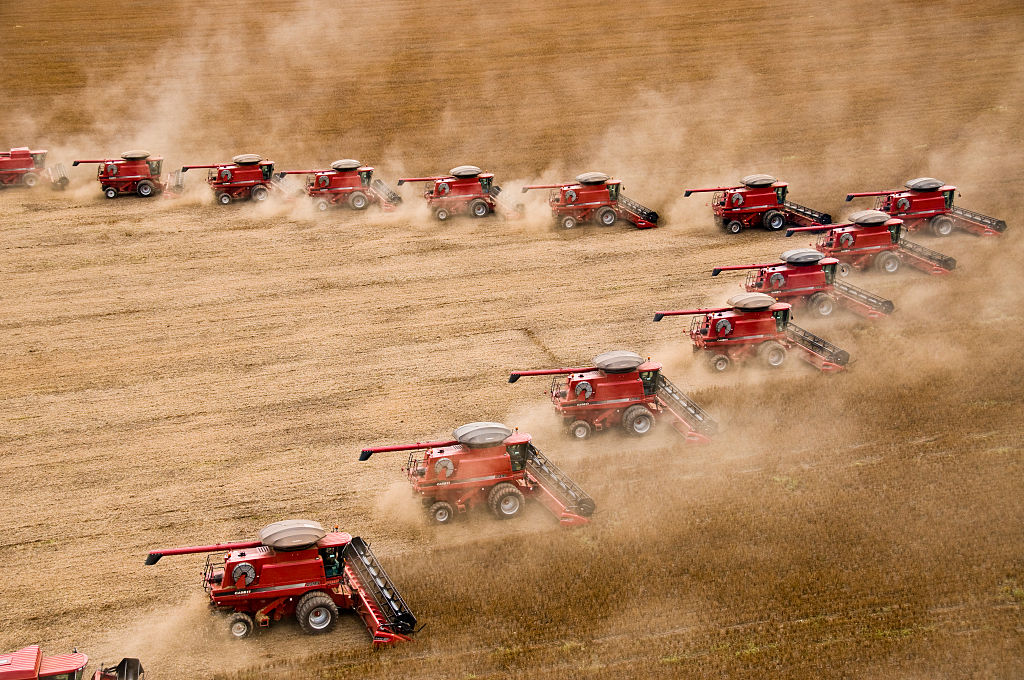Genevieve Donnellon-May and Filipe Porto

Although China has issued similar guidelines to its animal feed industry in previous years, this announcement comes in an increasingly complex and fractured geopolitical environment, continued competition with the United States, and rising concerns about food security.
It also coincides with the visit of Luiz Inacio Lula da Silva, the new president of agricultural powerhouse Brazil, to Beijing.
The US and Brazil provide over 80% of China’s soybean imports. In 2022, China imported 54.39 million tonnes from Brazil and 29.5 million tonnes from the US, according to its General Administration of Customs.
While China’s central authorities insist that food security plans and decisions are considered from a technical perspective they are, in practice, also political. The removal of a ban on Brazilian beef imports reflected Beijing’s calculation that Sino-Brazilian relations would likely improve under the new government.
China has an enormous appetite for soybeans as the world’s fourth-biggest grower and largest importer, accounting for more than 60% of global trade. MARA says over 88% of its domestic consumption relies on imports.
Most of that consumption is in animal feed, particularly pig feed. Soybean oil, most of it imported, is China’s primary edible oil, accounting for about 40% of oil consumption.
Despite China’s enormous population, the country has limited resources with only 7% of the world’s arable land and scarce water resources, making food security a constant preoccupation. Competing needs for land use, including for other crops such as wheat and corn, make it difficult for China to escape its soybean import dependence.
Memories of the political turmoil associated with the famines and food shortages of the 1950s and 1960s remain in the minds of older generations, including President Xi Jinping and other high-ranking officials. The challenge of feeding China’s enormous population has grown, with contamination levels rising due to industrialisation. Urbanisation, rising incomes, and the expansion of the hungry middle class drive increasing demand for meat and soybean products.
To safeguard its food supplies Beijing has since 2013, sought self-sufficiency in staples such as rice and wheat and in key protein sources, particularly pork. China also relies on the international market for non-staples, particularly soybeans.
Beijing has frequently emphasised the importance of increasing domestic production to safeguard food security through policy measures and targets. Xi has even publicly linked food supplies to national security.
Beijing could increase soybean imports from fellow member of the BRICS economic group, Brazil. Currently, the Sino-Brazil trade flow amounts to US$150 billion annually, while Brazilian exports to China reached $89 billion in 2022, with soybeans, iron ore, and crude oil ranked first, second, and third.
Given the recent bilateral agreements between the two countries, which include food security, and President Lula da Silva’s quest for stronger ties with Beijing, China may increase Brazilian soybean imports and reduce those from America.
According to one estimate, China can reduce soymeal consumption annually by at least 3 million tonnes, the equivalent of 4 million tonnes of soybeans. By 2025, soybean imports could decrease to 82 million tonnes with feed makers using greater quantities of substitutes like rapeseed and synthetic protein.
Additionally, soymeal reduction fits in with Beijing’s push for self-sufficiency. With China’s reliance on foreign soybeans viewed by Beijing as a weak link during the Trump-era trade war, this remains a major concern amid systemic US-China competition. As part of China’s broader efforts to become an agricultural power and achieve self-sufficiency through increased domestic production, it aims to have produced approximately 23 million tonnes of Soybeans, up about 40% from current levels, by the end of 2025.
However, the soybean dilemma has transformed from a production to a food security issue for China. It remains an enormous challenge for Beijing to simultaneously achieve self-sufficiency in foods such as rice, wheat, and corn, and in soybeans.
Further complicating matters, major concerns such as water scarcity and climate shocks including droughts and severe flooding have significantly affected China’s agricultural production, exacerbating fears of shortages. As such events could hinder plans to reduce reliance on imports, Beijing will likely continue diversifying the sources of soybean imports, including more from Brazil, to ensure a stable supply..
Xi has often declared that the rice bowls of China’s 1.4 billion people will always be firmly held in their own hands. Yet, Beijing still faces significant challenges in achieving this. Stronger Sino-Brazil ties, including new food security agreements, could result in stronger bilateral trade and investment for both countries.
Given their shared interests in food security and agricultural exports, the two countries could also establish a food security mechanism in the BRICS to improve food security among its members and for emerging countries.
Nonetheless, Brazil should reconsider its dependence on China as an export market for agricultural products and seek to diversify its exports. Beijing’s reliance on Brazilian soybeans makes Brasilia a key player for now when it comes to safeguarding China’s food security and stability. However, as China continues to search for alternative markets for agricultural imports, including soy, Brazilian exporters could find themselves replaced by cheaper alternatives.
No comments:
Post a Comment